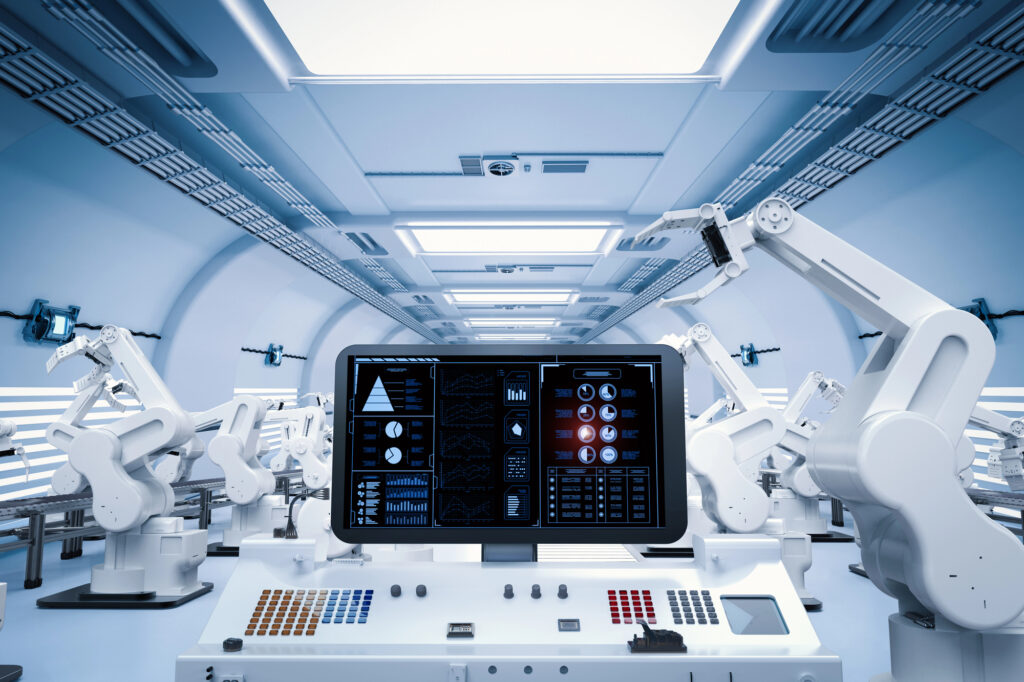The convergence of traditional work design and cutting-edge digital technologies, often referred to as Industry 4.0, is creating unprecedented opportunities for enhancing efficiency, accuracy, and flexibility in modern work systems. This article explores how Industry 4.0 technologies, such as the Internet of Things (IoT), artificial intelligence (AI), and machine learning, are revolutionizing work design and measurement.
The Foundations of Work Design
Work design, rooted in the principles of industrial engineering and human factors, focuses on optimizing the interaction between workers, tasks, tools, and the environment. Traditional methodologies like Process Improvement (PI) and Continuous Improvement (CI) have long been employed to streamline operations, reduce waste, and improve productivity. These methodologies involve meticulous planning, detailed workflow analysis, and the systematic elimination of inefficiencies. However, the advent of digital transformation has amplified these efforts, enabling more sophisticated and data-driven approaches.
Industry 4.0: A New Paradigm
Industry 4.0 represents the fourth industrial revolution, characterized by the integration of digital technologies into manufacturing and industrial processes. This new paradigm brings together advanced technologies that revolutionize the way industries operate, leading to unprecedented levels of efficiency, accuracy, and flexibility.
One of the core components of Industry 4.0 is the Internet of Things (IoT), which involves connecting devices and machinery to collect and exchange data. IoT technology allows for real-time monitoring and control of industrial operations, providing valuable insights that can be used to optimize processes and reduce downtime. By linking various devices and systems, IoT creates a cohesive network where data flows seamlessly, enabling more informed decision-making and predictive maintenance.
Another key element of Industry 4.0 is Artificial Intelligence (AI). AI enables machines to perform tasks that typically require human intelligence, such as visual perception, speech recognition, and decision-making. In industrial settings, AI can be used to automate complex processes, analyze large datasets, and improve overall operational efficiency. For example, AI-powered robots can work alongside human employees on production lines, handling repetitive or dangerous tasks with precision and consistency.
Machine learning, a subset of AI, plays a crucial role in Industry 4.0 by allowing systems to learn from data and improve over time. Machine learning algorithms can analyze patterns and trends in data to make predictions, optimize processes, and even discover new insights that were previously hidden. This capability is particularly valuable in quality control, where machine learning models can identify defects in products with high accuracy, ensuring that only the best quality items reach the market.
These technologies are not just enhancing existing processes; they are fundamentally transforming how work is designed and measured. Traditional methods of work design, which rely heavily on human intervention and manual processes, are being replaced by automated systems that can operate more efficiently and accurately. Measurements that once required extensive human effort can now be collected and analyzed in real-time, providing immediate feedback and enabling continuous improvement.
The integration of IoT, AI, and machine learning in Industry 4.0 is creating smarter, more responsive industrial environments. Factories are becoming more adaptive, capable of responding to changes in demand and production requirements with greater agility. This transformation is not just about implementing new technologies but about rethinking how industries operate and how work is structured.
Benefits of Industry 4.0 on Work Design
The advent of Industry 4.0 technologies brings a host of benefits that are revolutionizing modern industries. One of the most significant advantages is the dramatic boost in operational efficiency. The integration of IoT devices plays a crucial role in this transformation by providing real-time data on equipment performance. This data enables predictive maintenance, which involves continuously monitoring machinery to predict when maintenance is required before a breakdown occurs. By adopting this proactive approach, companies can minimize disruptions, maintain a steady production flow, and extend the lifespan of their equipment. This not only enhances productivity but also results in substantial cost savings and more reliable operations.
Accuracy is another critical benefit of Industry 4.0 technologies. AI and machine learning algorithms are particularly effective in this area, as they can analyze vast amounts of data to identify patterns and anomalies that humans might overlook. In quality control, AI-powered vision systems inspect products with exceptional precision, detecting defects that are invisible to the human eye. This capability ensures that only defect-free items reach the market, significantly improving product quality. The reduction in errors and waste leads to increased customer satisfaction and helps build trust in the brand, ultimately fostering stronger customer loyalty and enhancing the company’s market reputation.
Flexibility is essential for modern work systems to adapt to rapidly changing demands and conditions, and Industry 4.0 technologies greatly enhance this flexibility. These technologies enable the rapid reconfiguration of production lines and processes, which is crucial in today’s dynamic market environment. Machine learning algorithms optimize workflows in real-time, adjusting parameters to accommodate new product variants or fluctuations in order volume. This adaptability allows companies to respond swiftly to market changes, reduce lead times, and maintain a competitive edge. The ability to make quick adjustments and seamless transitions between different production requirements ensures that organizations remain agile and resilient, ready to meet evolving market trends and consumer demands.
Practical Implementation
To fully leverage the potential of Industry 4.0, organizations must adopt a strategic approach to implementation. The first step involves conducting a thorough assessment and planning process. This means mapping out existing work designs, understanding their limitations, and identifying areas where digital technologies can add significant value. By envisioning how digital tools can address these gaps, organizations can develop a clear roadmap for transformation.
Starting with small-scale pilot projects is a practical way to test the feasibility and impact of new technologies. These pilot projects help organizations understand the practical challenges and benefits of new technologies before committing to large-scale implementation. By gathering data and insights from these initial efforts, companies can make informed decisions about broader adoption.
Data integration is another crucial aspect of successful implementation. Organizations must ensure seamless integration of IoT devices, AI algorithms, and machine learning models with existing systems. Harmonizing data from various sources provides a comprehensive view of operations, enabling more accurate and effective decision-making. This holistic approach to data integration ensures that all parts of the system work together efficiently.
Fostering a culture of continuous learning and improvement is essential for adapting to new technologies. Organizations should encourage employees to embrace new tools and processes, providing training programs and workshops to upskill the workforce. By promoting a mindset of continuous learning, companies can ensure that their teams remain agile and capable of leveraging the latest advancements in Industry 4.0 technologies.
Collaboration is key to staying abreast of the latest advancements and best practices. Organizations should partner with technology providers, industry experts, and academic institutions to access specialized knowledge and resources. These collaborations can provide valuable insights and support, helping organizations navigate the complexities of digital transformation.
Case Studies in Industry 4.0 Adoption
The automotive industry has been at the forefront of adopting Industry 4.0 technologies. Companies like BMW and Tesla are using IoT and AI to streamline production processes. BMW, for instance, has implemented smart factories where IoT sensors monitor every stage of the production process. These sensors provide real-time data, enabling immediate adjustments and ensuring high-quality standards. AI-driven analytics help in optimizing supply chain logistics, predicting demand, and managing inventory more effectively.
In healthcare, the integration of IoT and AI is revolutionizing patient care and operational efficiency. Hospitals are using IoT devices to monitor patients’ vital signs continuously. These devices alert medical staff to any anomalies, ensuring timely interventions. AI algorithms analyze patient data to predict potential health issues, enabling preventive care. In addition to improving patient outcomes, these technologies enhance the efficiency of hospital operations, reducing wait times and optimizing resource allocation.
Manufacturers like Siemens are leveraging digital twins to enhance production flexibility and efficiency. A digital twin is a virtual model of a physical system that can simulate and predict real-world performance. Siemens uses digital twins to design, test, and optimize production processes virtually before implementing them on the factory floor. This approach reduces the time and cost associated with physical prototypes and allows for rapid adjustments to production lines based on real-time data.
Challenges and Considerations
While the benefits of Industry 4.0 are substantial, organizations must navigate several significant challenges to fully realize its potential. One of the primary concerns is data security. The integration of IoT devices increases the risk of cyber-attacks, as these connected devices can become entry points for malicious actors. To protect sensitive data, companies must invest in robust cybersecurity measures. This includes implementing advanced encryption methods, conducting regular security audits, and ensuring that all devices and systems are up-to-date with the latest security patches.
Another challenge is the cost of implementation. The initial investment required for deploying Industry 4.0 technologies can be substantial. Organizations must carefully consider the return on investment and plan for long-term benefits. This involves not only the cost of purchasing and installing new technologies but also ongoing maintenance and updates. Financial planning and budgeting for these expenses are crucial to ensure that the organization can sustain its digital transformation efforts.
Workforce adaptation is also a critical factor. Transitioning to a digital-first approach requires a significant shift in workforce skills and capabilities. Employees must be trained to effectively use new technologies, and this often involves a steep learning curve. Continuous training and development programs are essential to equip the workforce with the necessary skills and knowledge. Organizations should foster a culture of continuous learning, encouraging employees to embrace new tools and processes and adapt to the rapidly changing technological landscape.
Interoperability poses another challenge. Ensuring that different digital systems and devices can work together seamlessly is critical for the success of Industry 4.0 initiatives. This requires standardizing communication protocols and data formats to enable smooth data exchange between systems. Without interoperability, the full potential of integrated digital technologies cannot be realized, as data silos and incompatible systems can hinder efficiency and productivity.
Future Trends
As Industry 4.0 continues to evolve, several emerging trends are poised to shape the future of work design, fundamentally altering how organizations operate and compete in the global marketplace.
One significant trend is edge computing. Unlike traditional cloud computing, which processes data in centralized data centers, edge computing processes data closer to where it is generated—at the “edge” of the network. This approach significantly reduces latency, enabling real-time decision-making. For instance, in a manufacturing setting, edge computing can process data from IoT sensors on the factory floor almost instantaneously, allowing for immediate adjustments to production processes. This enhances responsiveness and efficiency, as decisions are made based on the most current data available.
Another transformative trend is the rollout of 5G technology. The advent of 5G networks promises to revolutionize connectivity by providing faster, more reliable internet connections. This enhanced connectivity will enable more robust IoT implementations, particularly in remote or distributed environments where traditional internet access may be limited or unreliable. With 5G, organizations can deploy a greater number of connected devices, all communicating in real time. This will facilitate more complex and data-intensive applications, such as remote monitoring and control of industrial processes, smart cities, and advanced telemedicine.
Advanced robotics is also set to play a crucial role in the future of work design. The integration of AI with robotics is leading to the development of more intelligent and autonomous systems capable of performing complex tasks. These advanced robots can operate with a high degree of precision and autonomy, reducing the need for human intervention in repetitive or hazardous tasks. In manufacturing, AI-powered robots can adapt to changes in production requirements, learn from their experiences, and optimize their performance over time. This not only increases efficiency but also enhances the flexibility and scalability of production systems.
These future trends highlight a broader shift towards more decentralized, data-driven, and autonomous work environments. As edge computing, 5G technology, and advanced robotics become more prevalent, organizations will need to adapt their work design strategies to leverage these innovations effectively. This will involve not only adopting new technologies but also rethinking organizational structures, processes, and workforce skills.
Embracing the Intersection
The intersection of work design and digital transformation through Industry 4.0 technologies is reshaping the future of work. By embracing IoT, AI, and machine learning, organizations can enhance efficiency, accuracy, and flexibility in their operations. The journey towards Industry 4.0 requires careful planning, strategic implementation, and a commitment to continuous improvement. As we move forward, the synergy between traditional work design principles and modern digital technologies will unlock new levels of productivity and innovation in various industries.
This transformation is not just about adopting new technologies but also about rethinking how work is designed and executed. It involves a holistic approach that considers the interplay between people, processes, and technology. By doing so, organizations can create work environments that are not only more efficient but also more adaptable and resilient in the face of change.
Author: Thomas Beil
Publication Date: July 31, 2024
© Copyright 2024 Perfect Planner LLC. All rights reserved.






